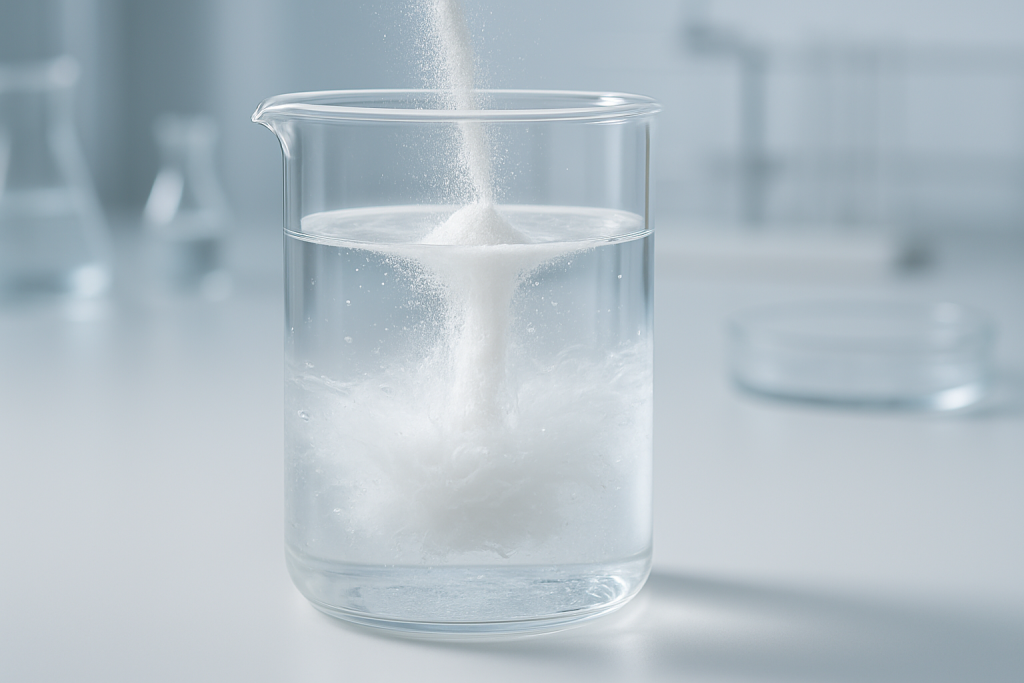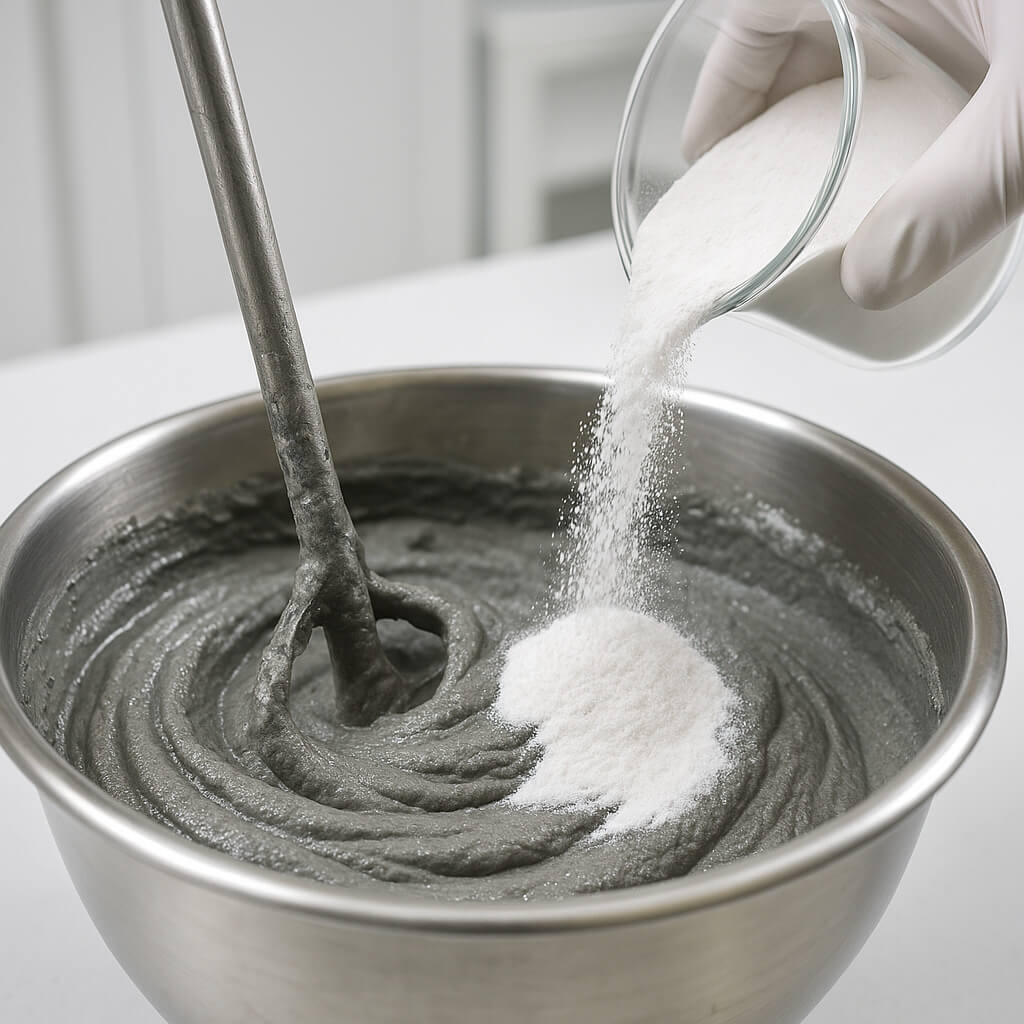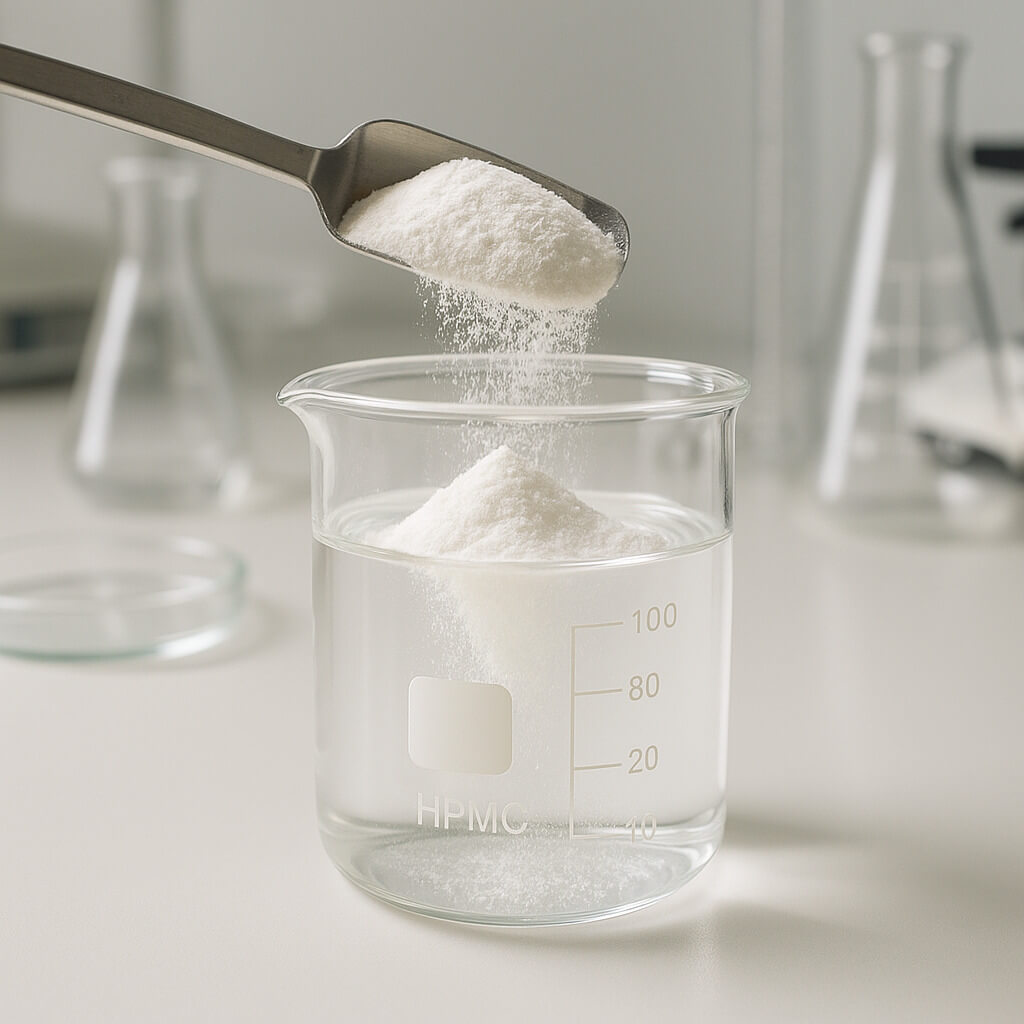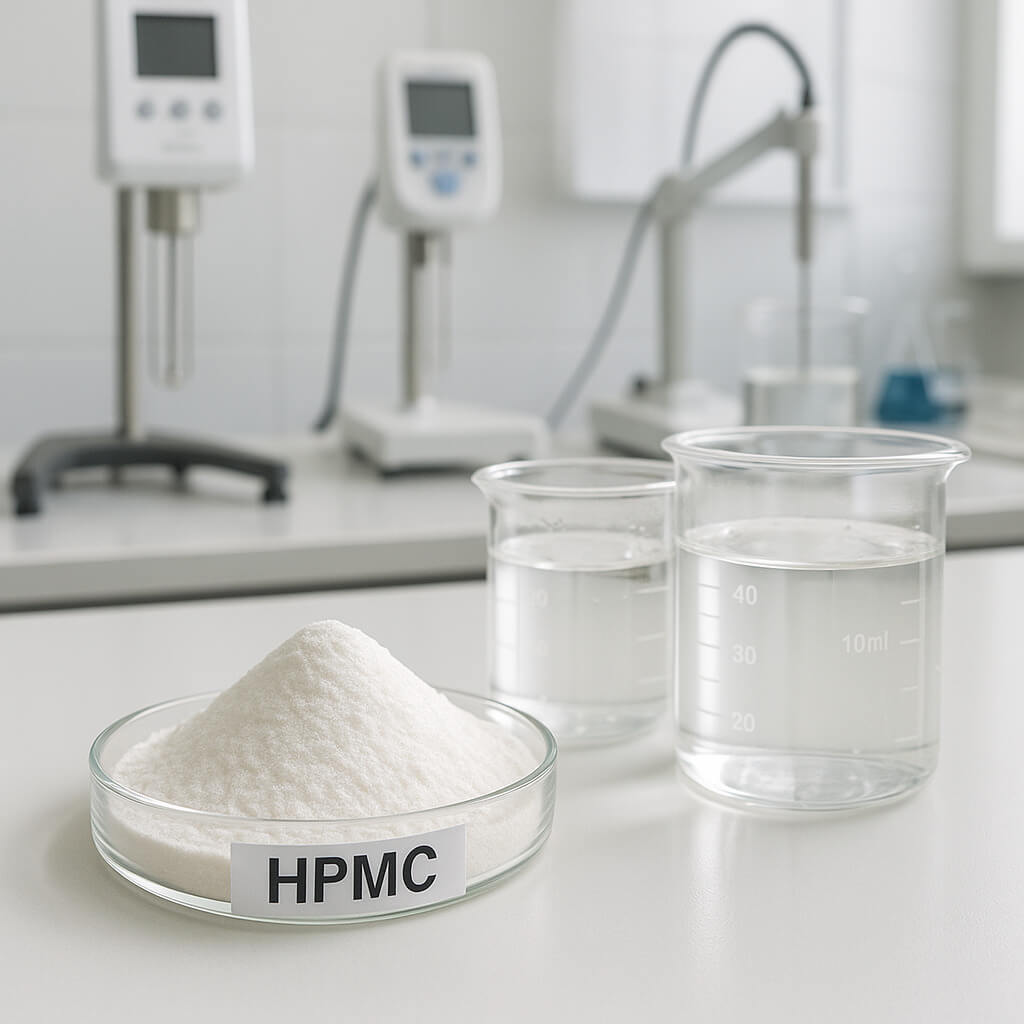Hydroxypropyl Methylcellulose (HPMC) is a versatile and widely used cellulose derivative across multiple industries. This article will walk you through everything you need to know about HPMC—its definition, applications, benefits, and how it impacts industries like construction, pharmaceuticals, and food processing. But here’s the kicker—understanding the ins and outs of HPMC can lead to better product performance, more cost-effective solutions, and superior results across your operations. Let’s explore how this material can benefit your business.

1. What is Hydroxypropyl Methylcellulose (HPMC)?
Hydroxypropyl Methylcellulose (HPMC) is a water-soluble cellulose ether created by modifying cellulose with hydroxypropyl and methyl groups. Ready for the good part? These chemical modifications enable HPMC to serve as a thickening agent, binder, stabilizer, and film former, making it invaluable across various industries.
The unique properties of HPMC allow it to dissolve in cold water, unlike many other cellulose derivatives, making it ideal for aqueous systems. In the construction industry, it’s commonly used in dry mortar, tile adhesives, and other construction materials to improve workability, enhance adhesion, and extend open time. In pharmaceuticals, it serves as a binder in tablets, a stabilizer in suspensions, and as a film-coating agent for capsules. In food applications, HPMC is used to improve texture, stability, and shelf-life.
Understanding the versatile functionality of HPMC opens up possibilities for improving both product performance and operational efficiency. Its ability to form gels, retain moisture, and adjust viscosity makes it an essential ingredient in numerous formulations.
| Property | HPMC | MC |
|---|---|---|
| Solubility | Water-soluble | Water-soluble |
| Viscosity | Customizable (low to high viscosity) | Moderate viscosity |
| Common Uses | Construction, pharmaceuticals, food, cosmetics | Pharmaceuticals, food, cosmetics |
2. How is HPMC Manufactured?
The manufacturing process of Hydroxypropyl Methylcellulose (HPMC) involves several key steps that ensure the final product meets the desired specifications for various applications. What’s the real story? It starts with cellulose, typically sourced from wood pulp or cotton, which is chemically modified through a series of reactions.
The first step involves treating cellulose with alkali to make it more reactive. Next, the cellulose is reacted with methyl chloride and propylene oxide, introducing methyl and hydroxypropyl groups, which are essential for the unique properties of HPMC. This process controls the degree of substitution, or the amount of these groups, which affects the final product’s properties like viscosity, gel strength, and solubility.
Once the cellulose is modified, it undergoes neutralization, washing, and drying processes to remove any residual chemicals. Finally, the HPMC is finely ground into a powder form that is suitable for a wide range of applications. Quality control is crucial at every stage, as HPMC’s performance depends on achieving the correct molecular structure and consistency.
| Process Step | Description |
|---|---|
| Alkali Treatment | Cellulose is treated to make it reactive |
| Chemical Reaction | Methyl and hydroxypropyl groups are added |
| Neutralization | Residual chemicals are neutralized and removed |
| Drying & Grinding | Final drying and powdering of HPMC |
3. What Are the Key Benefits of Using HPMC?
Hydroxypropyl Methylcellulose (HPMC) offers a range of benefits that make it an indispensable ingredient in numerous industries. Here’s the deal—its ability to modify viscosity, improve product texture, and enhance stability is crucial for the performance of various formulations.
One of the primary benefits of HPMC is its water retention properties, which are especially beneficial in construction materials like mortar and tile adhesives. This helps prevent the material from drying too quickly, improving the working time and ensuring stronger bonds once it sets. In pharmaceuticals, HPMC’s ability to act as a binder and control the release of active ingredients is key to ensuring that medications are effective over time.
In food processing, HPMC provides the necessary texture for a variety of products, including sauces, dressings, and dairy products. It also plays a role in stabilizing emulsions and preventing the separation of ingredients, making it an essential ingredient in many processed foods.
| Benefit | Industry | Outcome |
|---|---|---|
| Water retention | Construction | Improved workability, extended open time |
| Binder & stabilizer | Pharmaceuticals | Controlled release of medications |
| Texture enhancement | Food processing | Stable emulsions, improved texture |
4. What Industries Use HPMC?
Hydroxypropyl Methylcellulose (HPMC) finds use across a wide range of industries due to its versatile properties. This is where it gets interesting—whether it’s improving the texture of food products or enhancing the durability of construction materials, HPMC plays a vital role in each of these sectors.
In construction, HPMC is used in dry mixes for cement, mortar, and tile adhesives. Its ability to improve the consistency and workability of these products, along with its moisture retention capacity, makes it essential for many construction projects. In the pharmaceutical industry, HPMC is used in tablet formulations as a binder, and in capsules, it serves as a coating agent.
The food industry also relies on HPMC to stabilize and enhance the texture of products such as sauces, dressings, and dairy products. HPMC’s use in personal care products, including lotions and creams, is another important application due to its ability to thicken and stabilize emulsions. In cosmetics, HPMC helps to create smooth and stable formulations.
| Industry | HPMC Use | Key Function |
|---|---|---|
| Construction | Mortar, tile adhesives, dry mixes | Improves workability, moisture retention |
| Pharmaceuticals | Tablets, capsules, ophthalmic solutions | Binder, controlled-release agent |
| Food | Sauces, dressings, dairy products | Stabilization, texture enhancement |
| Cosmetics | Lotions, creams | Thickening, emulsification |
5. How Does HPMC Perform in Construction Materials?
HPMC is a key ingredient in various construction materials, particularly in dry mixes such as mortar, plaster, and tile adhesives. But here’s the kicker—its performance can significantly impact the workability, adhesion, and durability of these materials.
In tile adhesives, HPMC helps to extend the open time, giving workers more time to adjust tiles before the adhesive sets. It also improves the bonding strength of the adhesive, ensuring that the tiles remain securely attached over time. In dry mortar and plaster, HPMC’s ability to retain moisture prevents the mixture from drying too quickly, which is essential for proper curing. This leads to stronger and more durable bonds once the material sets.
Additionally, HPMC enhances the consistency of these materials, making them easier to apply and spread. This is particularly important in large-scale projects, where ease of use and uniformity are crucial.
| Application | Function | Benefit |
|---|---|---|
| Tile Adhesives | Extends open time, improves bonding strength | Stronger, more durable adhesion |
| Mortar & Plasters | Moisture retention, improved consistency | Better curing and durability |
| Dry Mixes | Enhances workability | Easier application and spreading |
6. How is HPMC Used in Pharmaceuticals?
In the pharmaceutical industry, HPMC plays several critical roles. What’s the real story? It serves as a binder in tablet formulations, helping to hold the ingredients together and ensure consistent dosage. It’s also used as a film-forming agent in the coating of capsules, providing protection for sensitive ingredients.
One of the standout properties of HPMC is its ability to control the release of active ingredients. In controlled-release formulations, HPMC is used to form a gel that slows down the release of the drug, ensuring that the medication is released over an extended period. This is particularly important in medications that need to maintain a constant therapeutic level in the bloodstream.
HPMC is also used in eye drops and other liquid pharmaceutical products, where it acts as a stabilizer and thickening agent. Its versatility and non-toxic nature make it an ideal choice for a variety of pharmaceutical applications.
| Application | Function | Benefit |
|---|---|---|
| Tablet Formulation | Binder | Ensures consistent dosage |
| Capsules | Film-forming agent | Protects sensitive ingredients |
| Controlled-release | Slows drug release | Maintains therapeutic levels |
7. What Are the Environmental Impacts of HPMC?
Hydroxypropyl Methylcellulose (HPMC) is a biodegradable material, making it a relatively eco-friendly choice in comparison to other synthetic additives. This is where it gets interesting—HPMC’s environmental impact depends on the manufacturing processes and the types of raw materials used.
The production of HPMC involves chemical modifications to cellulose, but many manufacturers are adopting greener methods that reduce the environmental footprint. For example, some companies are focusing on sustainable sourcing of raw materials and using more environmentally friendly chemicals during production. While HPMC is biodegradable and generally considered safe for the environment, the production process can sometimes involve the use of solvents, which can have an impact if not managed properly.
When compared to other cellulose derivatives, HPMC generally has a smaller environmental footprint, especially when sourced responsibly. Its biodegradability makes it a better option than some synthetic alternatives that can persist in the environment for longer periods.
| Environmental Factor | HPMC Impact | Comparison to Other Materials |
|---|---|---|
| Biodegradability | Biodegradable | More eco-friendly than many synthetic alternatives |
| Manufacturing Process | Involves chemical modifications, but sustainable practices are increasing | More sustainable than some synthetic options |
8. What Are the Different Grades of HPMC?
Hydroxypropyl Methylcellulose (HPMC) is available in various grades, each tailored to specific applications. Ready for the good part? The grade of HPMC you choose will depend on factors like viscosity, gel strength, and dissolution speed.
Low-viscosity grades are ideal for use in construction products, where they improve workability without significantly increasing the thickness of the material. Medium and high-viscosity grades are typically used in pharmaceuticals, where they serve as binders and help control the release of active ingredients. Some grades are specifically designed for use in food products, where they enhance texture and consistency.
Customization options allow for adjustments in viscosity and dissolution speed, which means HPMC can be fine-tuned to meet the exact requirements of any formulation.
| Grade | Viscosity Range | Common Applications |
|---|---|---|
| Low Viscosity | 100–500 mPas | Construction, food processing |
| Medium Viscosity | 500–2,000 mPas | Pharmaceuticals, cosmetics |
| High Viscosity | 2,000–10,000 mPas | Pharmaceuticals, controlled-release formulations |
9. How to Store and Handle HPMC Properly?
Proper storage and handling of Hydroxypropyl Methylcellulose (HPMC) are essential to maintaining its quality and effectiveness. What’s the catch? If not stored correctly, HPMC can absorb moisture, which could alter its performance.
HPMC should be stored in a cool, dry place away from direct sunlight and humidity. It’s best kept in airtight containers to prevent moisture absorption. When handling HPMC, it’s important to use clean, dry equipment to avoid contamination. Additionally, manufacturers should monitor the storage conditions regularly to ensure that the material remains in optimal condition.
| Storage Condition | Recommendation |
|---|---|
| Temperature | Cool, dry place (15°C to 30°C) |
| Humidity | Low humidity, moisture-free environment |
| Container | Airtight, clean storage |
10. What Are the Challenges When Using HPMC?
While HPMC offers many benefits, there are a few challenges that users may encounter. This is where it gets interesting—viscosity control can sometimes be difficult, especially when working with different grades. Achieving the desired viscosity or dissolution speed may require trial and error.
Another challenge is the cost of HPMC, which can be higher compared to some other cellulose derivatives. However, the superior performance and versatility of HPMC often justify the higher cost. Additionally, ensuring consistent quality and avoiding batch-to-batch variations can be a challenge, especially when sourcing from multiple suppliers.
| Challenge | Industry Impact | Solution |
|---|---|---|
| Viscosity Control | Inconsistent performance across batches | Select appropriate grade, test formulations |
| Cost | Higher cost compared to alternatives | Optimize supply chain, consider long-term benefits |
| Quality Consistency | Variability in different batches | Work with reliable suppliers, conduct regular testing |
Conclusion
Hydroxypropyl Methylcellulose (HPMC) is a remarkable and versatile compound that plays a critical role in several industries, from pharmaceuticals to construction to food processing. What’s the real story? Its ability to enhance product performance, improve workability, and provide stability makes it a go-to ingredient for numerous applications. Understanding its properties, uses, and the challenges involved can help businesses make informed decisions and achieve superior results in their formulations.
FAQ Section
Q1: What is Hydroxypropyl Methylcellulose (HPMC)?
HPMC is a cellulose derivative used as a thickening agent, binder, and stabilizer in various industries, including construction, pharmaceuticals, and food.
Q2: How does HPMC work in pharmaceuticals?
HPMC is used as a binder in tablet formulations, a film-forming agent in coatings, and a stabilizer in suspensions, particularly in controlled-release formulations.
Q3: What are the benefits of using HPMC in construction?
HPMC improves workability, enhances adhesion, and increases moisture retention in construction materials like mortar and tile adhesives.
Q4: What environmental impact does HPMC have?
HPMC is biodegradable and considered environmentally friendly, though its production process can involve chemicals, which should be managed sustainably.
Q5: How should HPMC be stored?
HPMC should be stored in a cool, dry place, away from direct sunlight and humidity, in airtight containers to maintain its quality.




